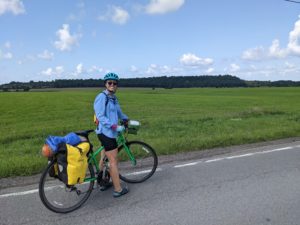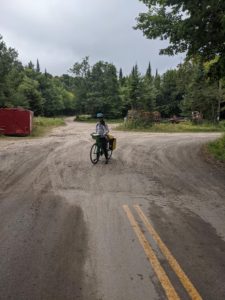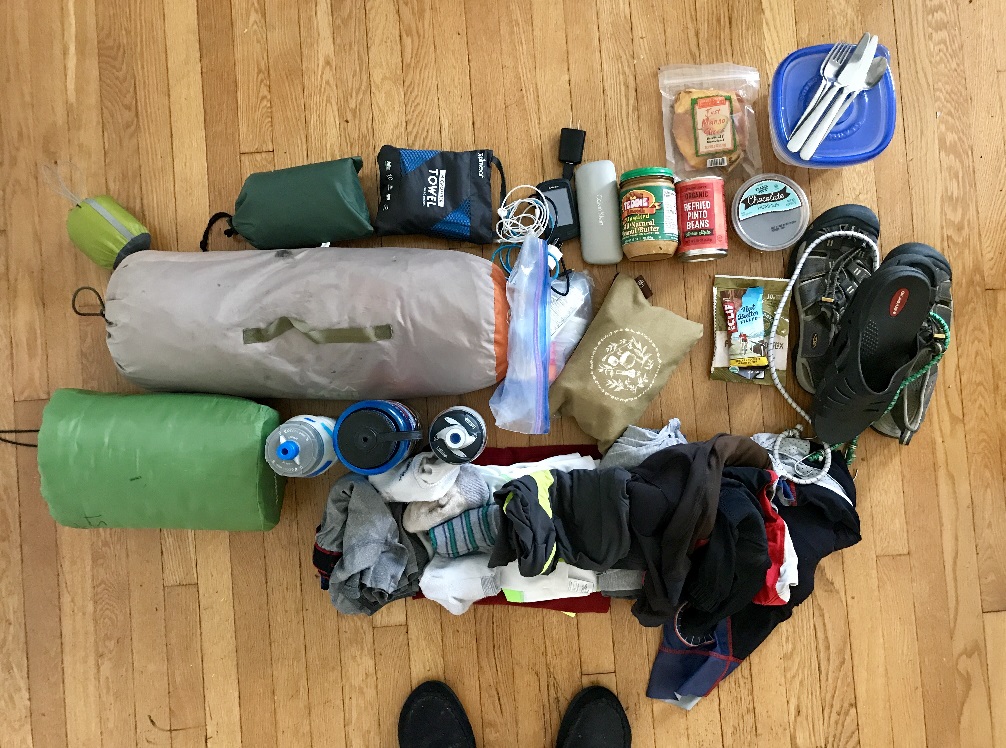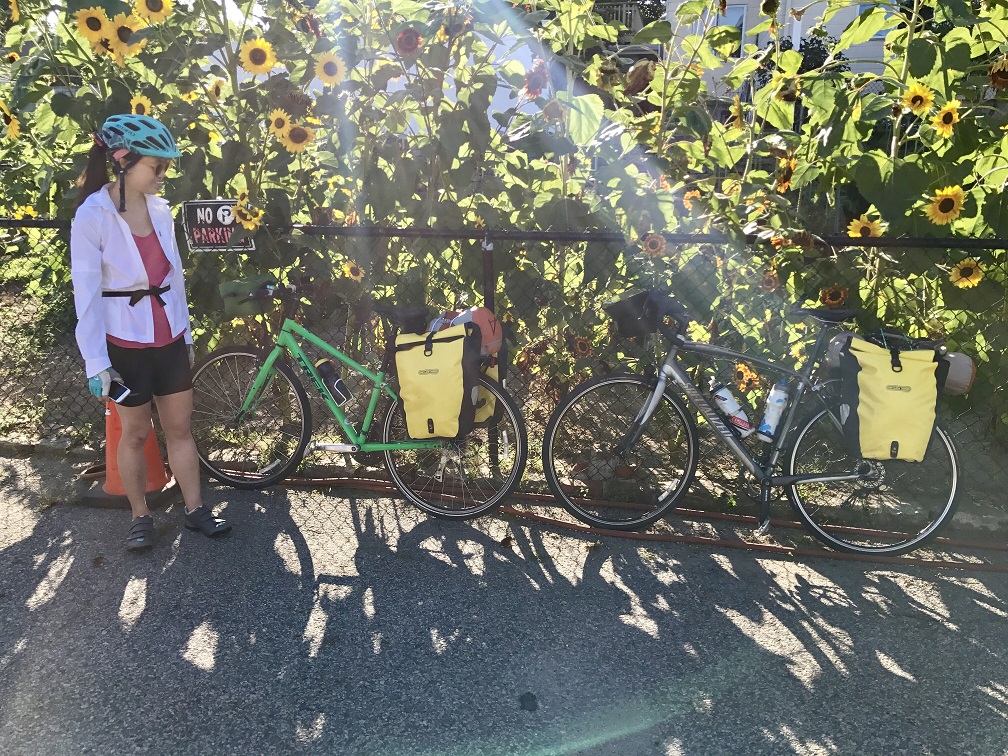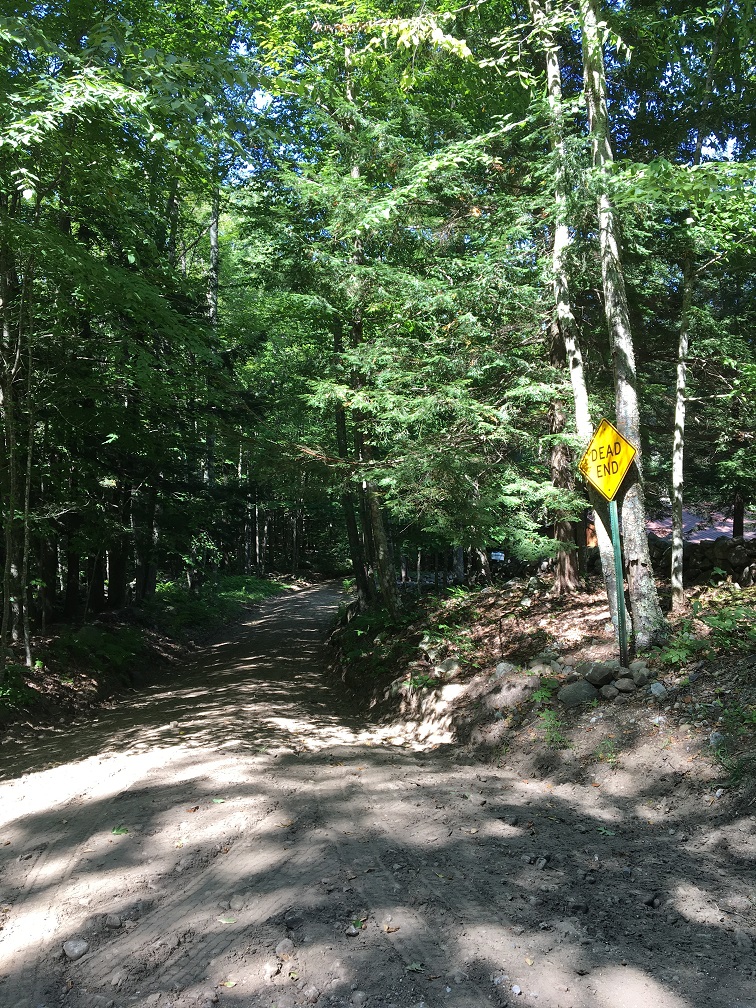The trip
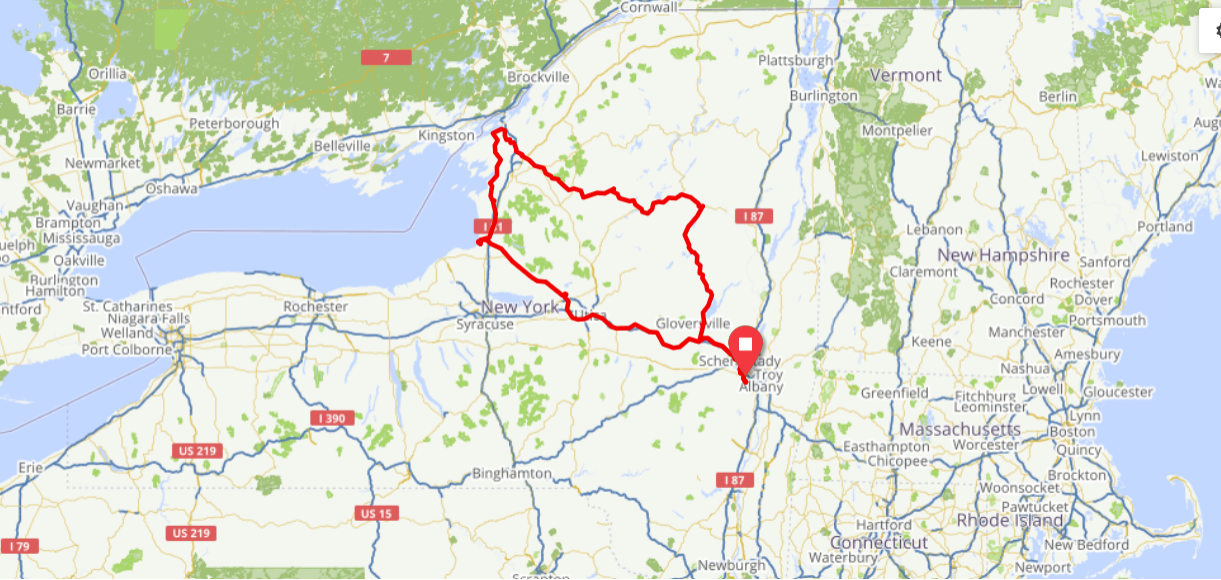
This trip happened over two years ago (in August/September 2021), but I am just now getting around to completing this post in November 2023. Better late than never! This was a great trip that deserves to be documented.
The route was a loop (see the map above) starting in Albany, NY, traveling along the Mohawk River to the shores of Lake Ontario, and ultimately following the lake to its outlet at the St. Lawrence River in the Thousand Islands region along the US/Canada border. From there, we spent three days returning to Albany through New York’s Adirondack wilderness.
This route is beautiful and has the benefit of (for the most part) being very quiet. However, given the mountainous terrain (over 18,000 feet of elevation gain in all), it certainly does not make for a good first multi-day bike trip. We did this trip in two parts – three days to bike from Albany to the Thousand Islands, and three days to bike back to Albany through the mountains with a rest day in-between. I’ll describe it day-by-day below.
Packing/gear

In advance of this trip, I bought my first-ever touring bike – a 2020 Fuji. I particularly admired its bar-end shifters. I installed a front rack and a two-legged kickstand.
Above you can see a picture of our touring setup. This was my first time every touring with front panniers, but these made a world of difference in that I could pack all food and food-related items (like my stove) in the front and not touch it all day. On the front rack I also carried a bear cannister (more on that later) which doubled as a convenient food container throughout the ride.
Leticia rode a simple non-touring-specific hybrid with only rear panniers. She carried the tent, and I carried a sleeping bag.
Day 1: Albany to Utica (106 mi)
Utica seemed like a logical stopping point for the first day of this sojourn. Not only do I have family there, but Utica is connected to Albany by the Erie Canal Trail, a nearly 400 mile bike path across upstate New York that was recently re-branded as the Empire State Trail. The ride is almost completely flat and mostly on dedicated bike paths. At 106 miles, this ride would make a great first century ride.
Mostly we enjoyed a gentle stroll along the Mohawk River as we grew accustomed to our heavily-loaded bikes. One highlight on the latter half of the ride is Herkimer Home State Historic Site, the home of General John Herkimer who died in the nearby Battle of Oriskany during the American Revolution.
Day 2: Utica to Pulaski (67 mi)
From Utica, we headed towards Lake Ontario. To be honest, this day was nothing to write home about – most of the day was spent tracking New York State 13, through cornfields and occasionally busy commercial areas. In all, it was a bit of a slog.
The end of the day was our reward, however, as we arrived at Selkirk Shores State Park, a campsite at the beach along Lake Ontario. This is surely a hidden gem. The waves from Lake Ontario crash as loudly as at the actual ocean. You almost don’t notice the cooling tower at Nine Mile Point Nuclear Generating Station off in the distance.
Day 3: Pulaski to Clayton (61 mi)
Lake Ontario drains into the St. Lawrence River in a region known as the Thousand Islands. Morning along Lake Ontario was very pleasant – we took a morning walk on the beach. From Pulaski we biked through the quiet countryside to the Thousand Islands region, along a water border with Canada. The ride itself was mostly through cornfields, but handsome cornfields at that. I also found the drivers in this part of New York State to be particularly patient and calm while interacting with us on the road.
Day 4 (rest)


Day 5: Clayton to Stillwater Reservoir (75 mi)
We left early in the morning to bike away from the St. Lawrence River. That also meant leaving its flat, peaceful floodplain and venturing to the east, towards the Adirondack Park. The entire day was uphill into the foothills of the Adirondack Mountains, passing landmarks such as Fort Drum along the way. We also had the opportunity to visit the International Maple Museum Center in the small town of Croghan, NY. Soon after, we entered a remote section of the Adirondack Park called the Independence River Wild Forest and for the last 10 miles of the ride the road switched to packed gravel. This was very difficult to ride on, and a significant portion of those 10 miles were traveled on foot pushing the fully loaded bikes. At the end of the day we reached our destination, the Stillwater Reservoir. All along the reservoir are wild campsites (first-come-first-serve) maintained by New York State’s Department of Environmental Conservation (DEC). They are all completely free to use. After a dinner over the campstove, we put our food away in a bear cannister and headed to bed.
Day 6: Stillwater Reservoir to Lewey Lake (65 mi)
After a quick morning hike to the reservoir and breakfast, we packed up and left our wild campsite. Unfortunately, setting off meant continuing along the gravel road for 10-15 miles. We were relieved when the road again gave way to paved asphalt (see the first photo above). That road eventually led to larger roads in a town called Eagle Bay Inlet, and eventually led to Indian Lake, NY. I didn’t take many photos this day, but there was a significant amount of elevation gain as we made our way through the heart of the Adirondack Mountains. The day concluded at a DEC campground at Lewey Lake in the middle of the Adirondack Park. Luckily we had picked up tortilla chips, beans, and avocado for a campsite dinner.
Day 7: Lewey Lake to Guilderland (100 mi)
We woke up to a quiet morning – fortunately, the campground was situated right on Lewey Lake and we were treated to a beautiful Adirondack Mountain view in the morning light (see first photo above). We felt triumphant about our trip so far and were excited to bring it to a conclusion. It was going to be a long ride, though, all the way from the middle of the Adirondack Park back to the Albany area. Luckily, it was primarily downhill, from about 2000 feet above sea level to nearly sea level in Albany. We set off on the road and were treated to a few more uphills, but soon enough we enjoyed a substantial downhill into the town of Speculator. Eventually we made it to Northville, on the shores of the Great Sacandaga Lake (a gigantic manmade lake filled by a New Deal-era dam project). After that, we came to the rim of the valley formed by the Mohawk River. From our vantage point in a cornfield (see last photo above) we could see down into the river valley and across to the other side, a sweeping view that the photo does not adequately capture. We rode down the hill into Amsterdam, NY along the river. Thankfully, Amsterdam lies along a paved portion of the Erie Canal bike trail which provided for a pleasant 30 mile ride back to Schenectady. From there, it was just 10 miles to the end of our trip. In Schenectady, we ran into another couple who had traveled from Seattle to bike the newly incorporated Empire State Trail from Buffalo to New York City. I gave them advice on the best roads to select for navigating Albany by bicycle and bid them farewell.
We arrived at the end of our ride having completed about 98.5 miles for the day. Of course, we had to do a few laps around the neighborhood to round that out to an even 100 mile century day to complete the trip.







